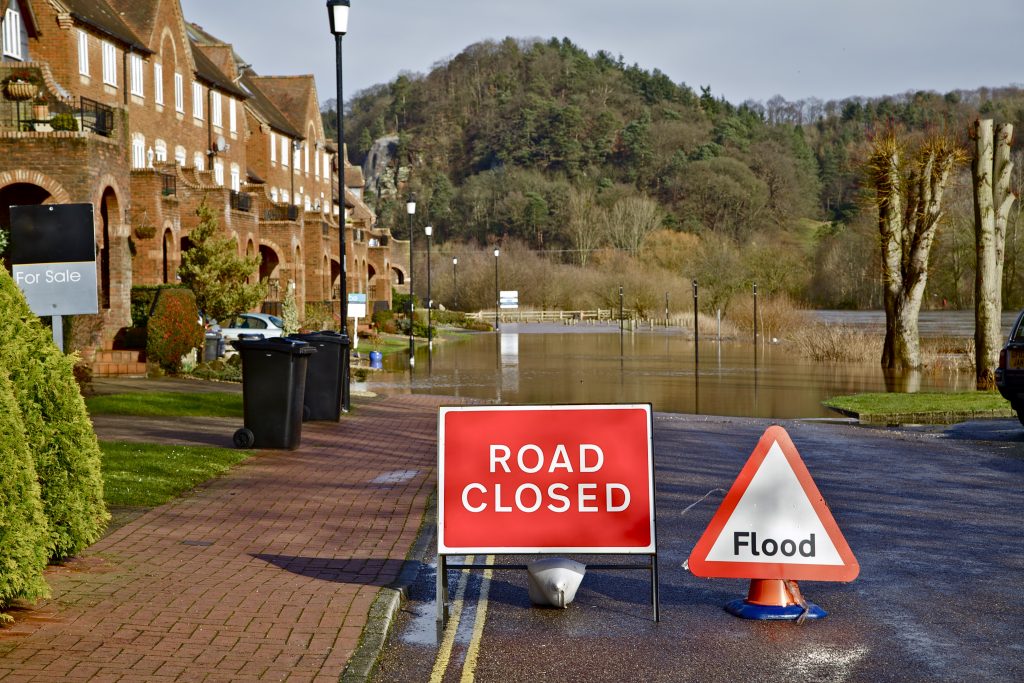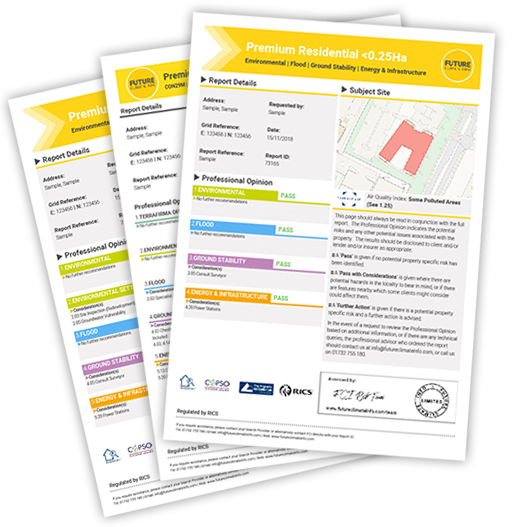
Flood Risk: Safeguarding your Client’s Financial Future Copy
Winter reminds us that it is getting wetter each year: whether rain or snowmelt, it has to find its way into rivers, ditches and waterlogged soil regardless of the property in its way. Regular news headlines and social media posts also tell us of the human impacts from damage, clean up and the longer term mental health impacts for affected residents.
But the financial impacts of no or expensive insurance cover, together with stricter lender requirements to protect against the capital, should be enough cause for conveyancers to take flood risk due diligence in the property transaction seriously.
1 in 6 properties are at flood risk in England. In the UK as a whole, Government estimates put the number of dwellings at risk of river and coastal flooding at around 2 million, with a further eighty thousand properties in towns and cities at risk from surface flooding that overwhelms drains from sudden localised heavy rain.
And it is getting worse. There is a clear long term trend for the north and west of the UK becoming wetter and this is reflected in more serious flood events in these river catchments, such as those we reported on with the River Don last year. With every 1 degree centigrade rise in temperature it is estimated that a 6-7% increase in moisture and rainfall will occur on average.
These trends and the impact of recent events have redrawn the flood risk maps of our country. The Environment Agency (EA) revised their climate change allowances in 2016, redrawing the map of river and coastal flood risk.
These allowances account for changes to peak river flow, peak rainfall intensity, sea level rise and extreme wave height. It allows local authorities to plan their strategic flood risk assessments to engage with developers on the location of new housing applications, especially in flood zones 2 and 3, which have the highest risk.
New Builds continue on Flood Plains
Planning policy is clear that housing should be located in the areas least at risk of flooding and, when development in a risk area is absolutely necessary, “sufficient measures should be taken to make sure homes are safe, resilient and protected from flooding”.
And yet, 1 in 10 of all new homes – more than 84,000 – in England since 2013 have been built on land in zones 2 and 3.
Data from the ministry of housing, communities and local government (MHCLG) shows that the number of new houses built on land at the highest risk of flooding has risen from 9,500 in 2013 to 20,000 in 2017-18, following a peak of nearly 24,000 the previous year.
Local Authorities are under pressure to meet the Government’s target 300K new build homes per year to meet housing demand and there exists a clear tension between supplying local need and matching it to suitable sites,
For example, based on a sample of 50 developments around the Newport area, we identified that 17 of those developments are located within flood plains, meaning those communities could be at a significant risk of flooding.
Measures to mitigate the risk, such as Sustainable Drainage Systems (SuDS) should have been considered during the planning phase. But these developments could still be impacted by factors outside the boundary of that development, such as alterations to local flood defences, or nearby changes in land use.
It is only when we get a repeat of a chain of storms, like we saw with Dennis, Ciara and Jorge last year, will we see if this redraws the flood risk map for these properties.
Insurance Safety Net…for Some.
In 2016, the government and the insurance industry launched Flood Re – designed to act as a reinsurer covering part of the enhanced flood risk and ensure affected homeowners can obtain affordable insurance. However, the deal only applies to homes built prior to 2009, which creates understandably significant concern for homebuyers looking at properties built after this.
There are clusters of new-build homes in areas including the Humber river basin in Yorkshire and Humberside, Somerset, Lincolnshire and the Fens, the Thames Estuary, the Trent and Soar in the Midlands, Merseyside and Greater Manchester, and the Lancashire coast. Some of these are located in areas where at least half of residential properties have the highest flood risk, equivalent to one-in-30 or higher annual chance of flooding.
1 in 5 UK households are private rentals, who are also excluded from Flood Re and rarely benefit from any consideration of flood risks prior to entering into their tenancy. This is a significant number who may have little or no idea whether they are situated within an area prone to flood risk, and therefore vulnerable to the significant cost and upheaval that a flood event could bring
There have been calls for the Government to change policy, so that homes built more recently than 2009 are covered by Flood Re, and that more information is provided automatically so that homebuyers know what they are walking into every time. The Government has promised a further £4bn in flood defence expenditure over the next five years and there is more welcome focus now on natural flood management to slow the flow of upland streams so they do not impact on the houses downstream.
But the Environment Agency has criticised that it is too little investment over too short a horizon, with planning needed for a generation so that climate change can be properly accounted for. This acceleration would be the single greatest impact on safeguarding affected homeowners financial futures from flooding.
Lending and Insurance: the Catch-22
Lenders adopt a mixed approach to flood risk. Any valuation is based on whether a property would be readily saleable in the event that it has to be taken into possession and sold.
All lenders require borrowers to have suitable buildings insurance with flood cover as a condition of their mortgage, according to UK Finance, and this is irrespective of whether an area is considered high risk.
If the property is in flood zone 2 or 3 but not within the Flood Re area then it can be prohibitively expensive. A buyer can find themselves quickly in a Catch 22 situation where they are unable to insure a property and the lender won’t release the funds due to the buyer not having valid home insurance with a flood risk element attached.
The lender will want to ensure that both they and the client are protected before proceeding with a mortgage offer, because if the client cannot afford the repairs or a very high insurance premium, they will probably not afford the repayments and the value of the property would diminish over time, affecting the lenders ability to resell should they need to take possession.
Equally, a property with lower flood risk could be sharing a postcode with one down the road with a far higher risk and history of claims. Insurers will make premium calculations in a variety of ways – some will do it at part postcode, others whole, some property specific. So it becomes a bit of a lottery without clear expert, independent guidance to support both the application for insurance and then to secure the loan.
If more frequent cases of flooding in certain areas were to render property uninsurable and un-mortgageable, then whole swathes of property could become blighted, or you only attract those cash buyers willing to accept the risk for the right property.
Get the Detail for the Right Flood Due Diligence
The Law Society published revised guidance for conveyancers on flood risk to protect their clients. There is a clear duty of care to provide the clearest understanding of what types of flooding have occurred in the area and how this could impact on the insurability and lending on your client’s site or property.
Conveyancers must ensure that the legal enquiries made on their behalf include a comprehensive environmental search report, which includes a risk assessment of all flood types – river, coastal, surface and groundwater flooding.
Future Climate Info combines the best in class data and expertise to forensically analyse how flooding has and could shape your client’s future asset. The FCI Premium Residential Report includes a JBA Floodability rating at a 5m resolution, together with an insurability rating to give the clearest understanding of property-specific flood risk for your client.
Where a flood risk is highlighted for your client, an FCI Flood Appraisal can be obtained, which provides an independent expert insight at a property-specific level. The fully manually-assessed report is designed to guide and inform all stakeholders within a transaction (whether they be home buyers or sellers, commercial investors, business owners, lenders/insurers, conveyancers or solicitors), providing the confidence needed to make informed decisions.
For more information on our flood risk assessments in our environmental reports, contact us on 01732 755 180 or email info@futureclimateinfo.com
Try before you buy
To take advantage of a trial free order of your first environmental report, please complete the enquiry form and we will get back to you as soon as possible. We will need to take more details of the property or site and ask some more questions about your firm and the transaction.

